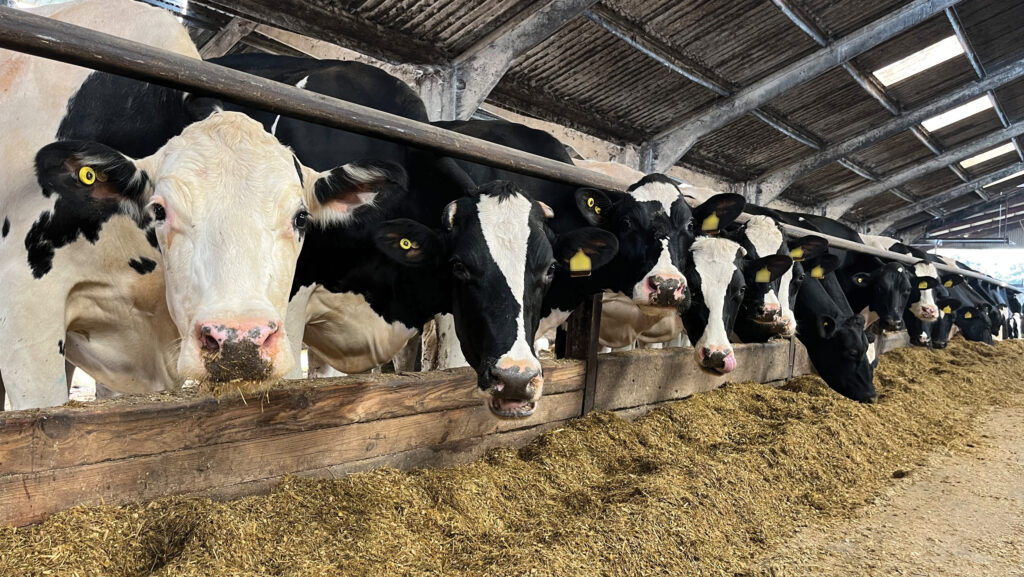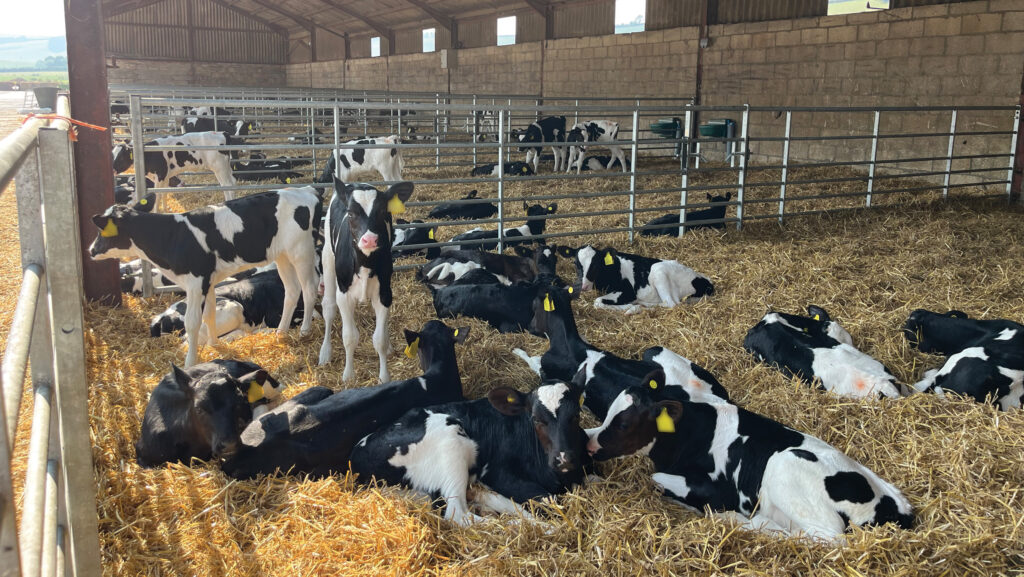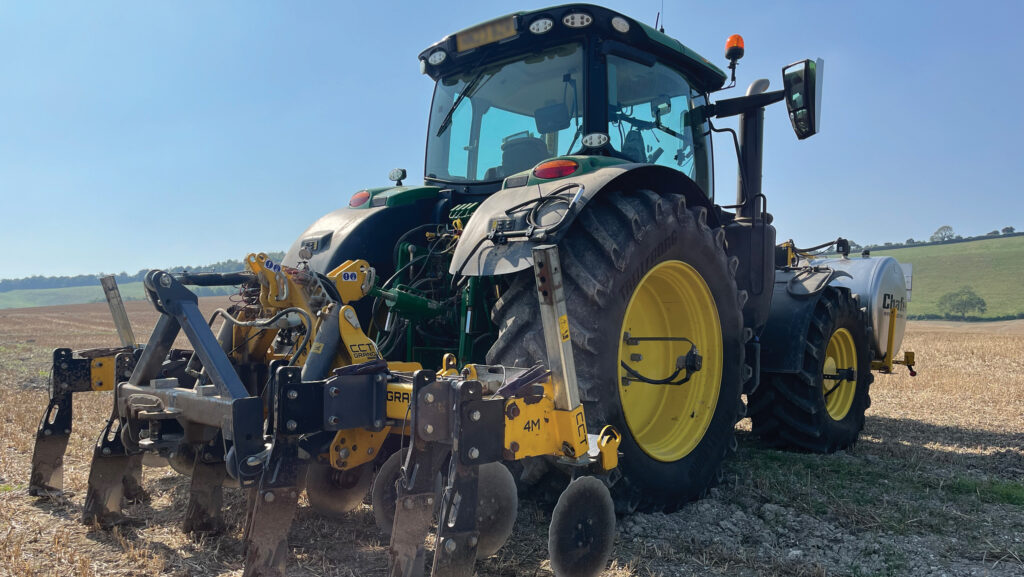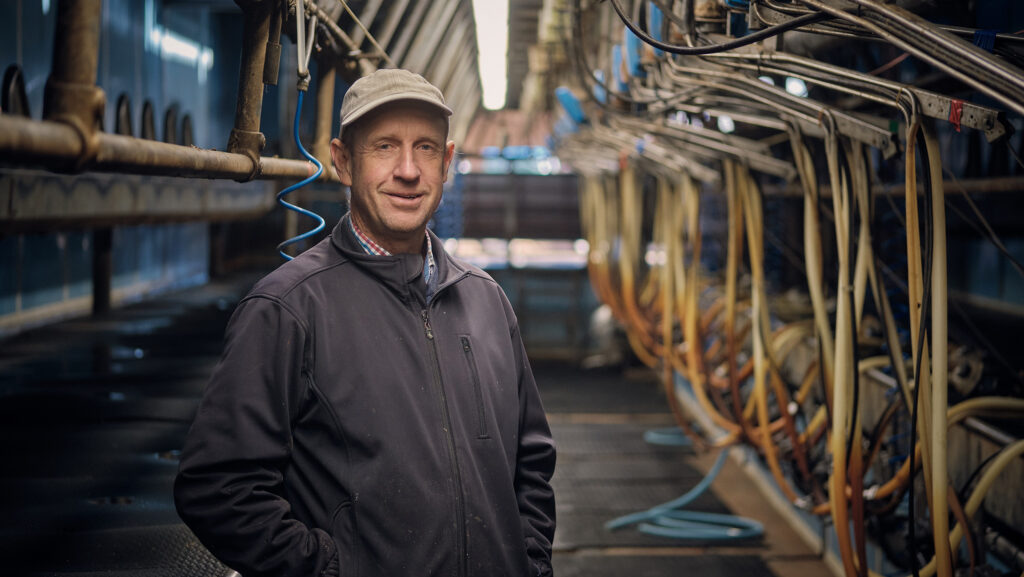3 ways a Hampshire dairy is focusing on biological assets
 © Hayley Chapman
© Hayley Chapman For nearly 100 years, Whitewool Farm has operated a high-input, high-output system, with current annual milk yield sitting at 10,046 litres a cow.
However, the brothers running the 400-cow herd near Petersfield have set themselves a bold challenge: to reduce artificial inputs to become the most productive dairy farm in the UK – naturally.
To achieve this goal, Will and Jamie Butler have decided to pursue a more environmentally sustainable “adaptation” to the dairy and arable enterprises, alongside their 125-year commitment to a nitrate mitigation scheme.
See also: Tips on motivating staff during block calving
“Forward 10, 15, 20 years, and the environmental issues are either going to get bigger or go away, but I don’t think they are going to go away, so we want to have this farm well positioned,” says Jamie.
“We are working with a complex system and if you nudge something in one area, you’re going to get effects in another area – sometimes not good. The idea is to optimise the system, and the way we do that is by trial and error.”
Below are three key areas that Will and Jamie are going to focus on.
1. Nutrition
Jamie says they will continue to look at how they can improve feed and reduce concentrate fed, while keeping an eye on costs and margin.
For good gut health, the focus, first and foremost, needs to be on quality and palatability of forage so that cows eat as much as possible, according to the farm’s nutritionist, Martin Attwell.
“At the minute, we are at 1,800 litres from forage,” he says, with cows currently typically requiring 0.38kg/litre of concentrate.
Martin says the balance of dry matter (DM) in forage versus concentrate is key, as is utilising the good-quality forage produced on the farm.
For optimum rumen condition, the diet should be as high in fibre as possible and include haylage.
“Rumen health is a priority and so far, so good – this continues to be excellent,” he adds.
See also: 5 practical ways to lift milk from forage
The milking ration currently consists of 29kg maize silage, 16kg first-cut grass silage, 0.5kg haylage, 3kg caustic wheat and 11kg premix blend, which equates to 24kg of DM intake.
The diet is balanced to provide a minimum of 14kg DM from forage, with high yielders fed for 42 litres of milk.
A home-grown mix of rye, oats, beans and vetches will soon be incorporated into the total mixed ration (TMR), replacing a single-species wholecrop of oats or wheat.
“The multispecies mix yielded better, at 47t/ha, and was used as a break for grazing paddocks as well as fixing nitrogen,” says Martin, adding: “It analysed at 10MJ/kg dry matter, which is lower than our grass silage, however, it offers excellent fibre and starch and also opens up the ration, improving rumen and gut health.”
The brothers do not want to push too much protein and end up with nitrogen excreted on the ground without yield benefits, so they currently aim for 15-15.5% crude protein.

© Hayley Chapman
Having moved away from feeding soya, the farm is trialling an enzyme-treated rapeseed meal as a source of protein.
During this autumn’s calving, the farm is trialling the addition of biochar in calf milk to improve calf health.
The idea is that the carbon in the biochar gives the microbes somewhere to live.
“Once we hit 300 calves through the buildings, traditionally, we have nearly always got scours, so we are hoping this will help prevent it,” explains herd manager Luke Sealey.
2. Grassland management
As part of their Sustainable Farming Incentive (SFI) agreement, 60ha (148 acres) of herbal leys are being drilled into the grazing platform.
The leys will consist mainly of a mixture of grasses, clover and plantain.
Depending on growth, it is likely a first cut of silage will be taken from these leys and following that, they will be rotationally grazed.
Luke aims to put cows into the 5ha (12-acre) paddocks at a cover of 2,800-3,000kg DM/ha and move them on at 1,600-1,700 kg DM/ha, resting paddocks for 20-30 days, depending on time of year.

© Hayley Chapman
Jamie says it remains to be seen how the herbs will affect milk production, but through SFI, they are able to access a significant amount of money to trial how herbal leys will work in the system and affect soil health.
On a dry farm that struggles to grow grass, they are hoping they will improve water retention in the soil.
“We have been using foliar nitrogen to get nitrogen into the plant rather than the soil, which significantly reduces the amount that ends up in the river,” Jamie says.
The foliar mix includes urea, bitter salts, molasses, magnesium and humic acid.
He and Will are currently looking at securing grant funding to purchase rainwater harvesting kit.
They plan to use this to mix foliar fertiliser with rainwater instead of the hard water in their area. This should make the mixing process easier and hopefully aid plant uptake.
3. Fermenting slurry and manure
The farm has embraced the use of microbes in slurry and on straw. For example, a pre-made liquid mix of microbes is applied weekly to the straw beds in the heifer sheds using a handheld pump sprayer.
“It composts the manure, and it comes out almost like soil, without the wet heaviness and strong ammonia smell,” Jamie explains.

Jamie Butler © AHDB
He finds it also thins the slurry, making it easier to store and apply through an umbilical system.
The aim of this fermentation is to create an effective soil food, preserving the carbon value of the manure.
“You’ve also got to analyse slurry because nutrient value will vary,” he adds.
Alongside this, several Johnson-Su bioreactors are being used to produce living biological material to add to the soil in the form of a seed dressing on cover crops and wheat.
See also: How to build a Johnson-Su bioreactor to produce your own on-farm biology
The Johnson-Su is a composting setup in a converted intermediate bulk container, into which Jamie has been putting slurry, straw, woodchip and silage.
With the addition of a handful of worms, the bioreactor will produce a compost in 400 days.
The compost remains stable for several years and can be used as a seed dressing or mixed with water and sprayed at the point of planting. Jamie plans next to trial it with fresh maize.
“It is all about enhancing the biology right through the whole farm, aiming for a profitable, sustainable, resilient system, with a happy team,” he says.
- Jamie Butler and Martin Attwell were speaking at a recent AHDB event at Whitewool Farm
Farm facts – Whitewool Farm, Petersfield, Hampshire
- Farming 504ha: 445ha owned and 59ha rented
- 400-head dairy herd, grassland, forage crops (grass, maize and wholecrop) and combinable crops (wheat)
- Diversifications including fishery, glamping and event hosting
- Holstein Friesian cows, autumn-block calving
- Yield: 10,046 litres a cow at 3.25% protein and 4.09% butterfat
- Supplying milk to Muller – Sainsbury’s
- Cows housed October to March in sand-bedded cubicles
- Annual rainfall: 750ml
- New AHDB Strategic Dairy Farm
